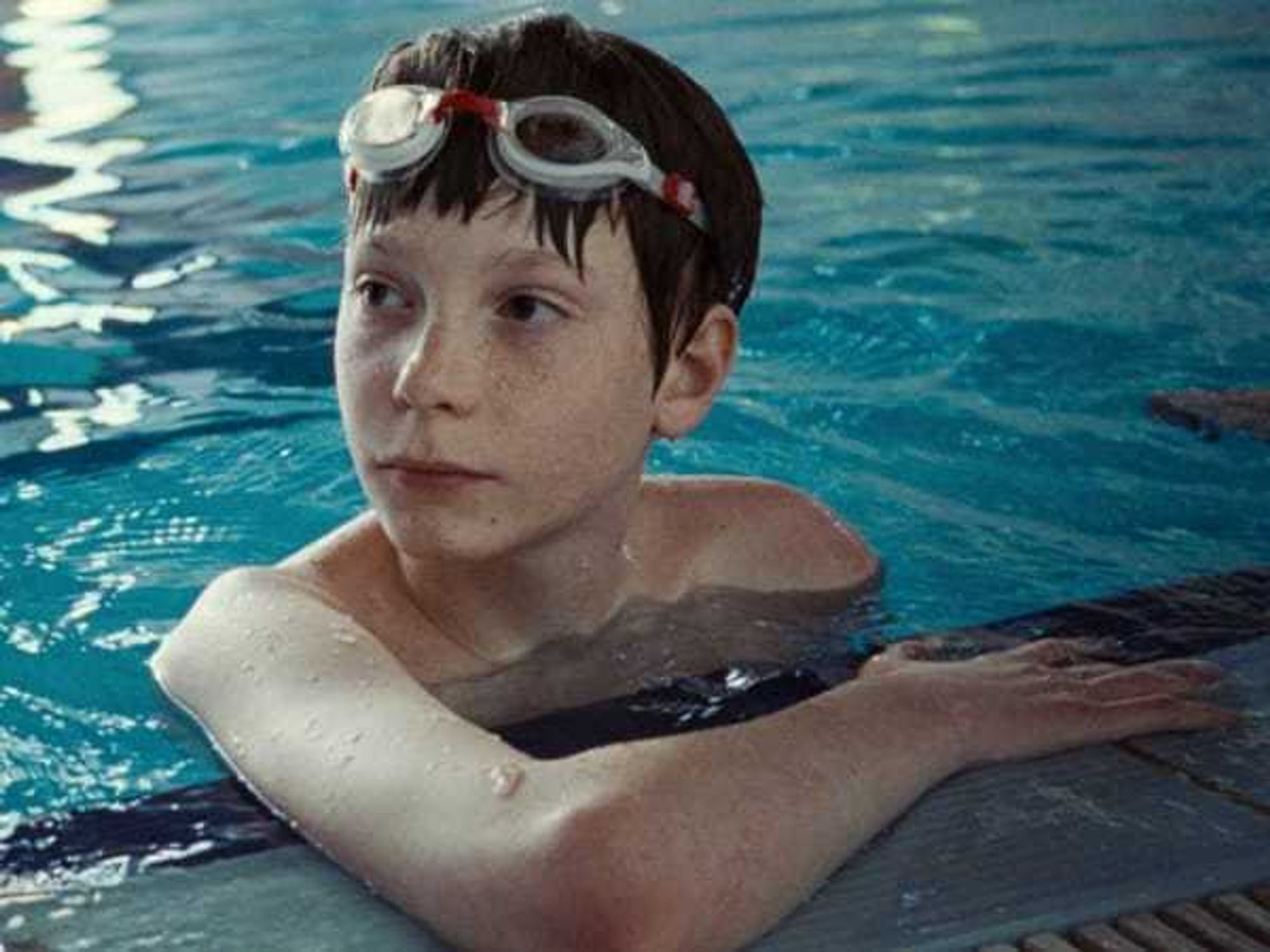Musiqa, CAMH & Project Row Houses
New music in a different arena: A violent brawl that radically questionshyper-masculinity
 The Arena, a vision of New York-based performance artist Shaun El C. Leonardo,who's also a painter and sculptor, was performed twice in a Musiqa Loft Concertat the Progressive Amateur Boxing Association Saturday.Photo by Max Fields
The Arena, a vision of New York-based performance artist Shaun El C. Leonardo,who's also a painter and sculptor, was performed twice in a Musiqa Loft Concertat the Progressive Amateur Boxing Association Saturday.Photo by Max Fields Shaun Leonardo has been deconstructing hyper-masculine stereotypes by engagingin red-blooded activities and surveying pop culture hero paradigms.Photo by Max Fields
Shaun Leonardo has been deconstructing hyper-masculine stereotypes by engagingin red-blooded activities and surveying pop culture hero paradigms.Photo by Max Fields The initial 6-foot body slam that pounded floor conveyed that this was atangible, painful grapple.Photo by Max Fields
The initial 6-foot body slam that pounded floor conveyed that this was atangible, painful grapple.Photo by Max Fields There wasn't a winner nor a loser, but two hard-bodied men who tested eachother's physical strength.Photo by Max Fields
There wasn't a winner nor a loser, but two hard-bodied men who tested eachother's physical strength.Photo by Max Fields Through Mexican wrestling, bull fighting, boxing and visual arts , Leonardowants to expound a different point of view for what it means to be a patriarchaccording to shifting 21st century ideals.Photo by Max Fields
Through Mexican wrestling, bull fighting, boxing and visual arts , Leonardowants to expound a different point of view for what it means to be a patriarchaccording to shifting 21st century ideals.Photo by Max Fields Leonardo, aka "El Conquistador," and his opponent "Firebird" Jorge Santidescended the back stairs and greeted 60 spectators, some of whom were dressedin creative black tie.Photo by Max Fields
Leonardo, aka "El Conquistador," and his opponent "Firebird" Jorge Santidescended the back stairs and greeted 60 spectators, some of whom were dressedin creative black tie.Photo by Max Fields
In my years of training to become a classical musician, I have attended a diverse gamut of performances at venues that range from traditional concert halls to grungy bars to alternative venues to experimental interactive aleatoric sound environments, hearing objects like cacti, carrots and metronomes as instruments and anything under the sun submerged in water for cosmic effect.
I can now add a Greco-Roman brawl to the list of things I'd never imagined working alongside new music — in the name of art. Seriously.
Chances are that a concert goer with a penchant for the timbers of western classical music may never set foot inside a boxing ring to spectate wrestling, just as a fan of World Wrestling Entertainment may not seek out chamber music recitals as a weekend leisure activity.
This was a tangible, painful grapple that exchanged blows one after another.
The Arena, a vision of New York-based performance artist Shaun El C. Leonardo, who's also a painter and sculptor, was performed twice in a Musiqa Loft Concert at the Progressive Amateur Boxing Association Saturday as part of Contemporary Art Museum Houston's Radical Presence: Black Performance in Contemporary Art, on view through Feb. 15. Inside the athletic facility in Houston's Third Ward, Musiqa partnered with Leonardo, in collaboration with Project Row Houses, to realize a holistic mise-en-scène where archetypal definitions of masculinity were put into question.
Leonardo has been deconstructing hyper-masculine stereotypes by engaging in red-blooded activities and surveying pop culture hero paradigms. He's approached his subject through Mexican wrestling, bull fighting, boxing and visual arts en route to expound a different point of view for what it means to be a patriarch according to shifting 21st century ideals, whether true or imagined.
With the thunderous sound of snare drums tolling some type of a march to the death, Leonardo, aka "El Conquistador," and his opponent, "Firebird" Jorge Santi, descended the back stairs and greeted 60 spectators, some of whom were dressed in creative black tie, before negotiating through the ropes and onto the raised platform.
Though at first viewers may have been fooled into thinking this was a make-believe tournament — for play, for art, but not for real — the initial 6-foot body slam that pounded the not-so-padded floor canvas cleared up that confusion rather quickly. This was a tangible, painful grapple that exchanged blows one after another.
The stage was set to transport the audience into this milieu. Each guest was given a black handkerchief to twirl and cheer or boo the wrestlers. Before long everyone was fully invested in the action while hollering words of encouragement or disapproval in Spanish and English.
There was neither a winner nor a loser, but two hard-bodied men who tested each other's physical strength.
The music, not dissimilar from Wagner's treatment of orchestral scoring where the instruments offer a truth not evident with the naked eye, percussionists Craig Hauschildt, Alec Warren and Blake Wilkins improvised with mallet instruments, Tibetan singing bowls, cymbals and assorted noisemakers that, when heard over the high-decibel ambiance, challenged aggression and violence as means to arrive at male camaraderie and brotherhood.
Covered in sweat, the fighters concluded with a firm, tired, amicable handshake paired with determined eye contact. There was neither a winner nor a loser, but two hard-bodied men who tested each other's physical strength.
"We took it easy knowing there was another performance," Leonardo laughed.
I rolled my eyes.
While in retrospect I became curious about why I, an otherwise peace-loving Canadian, would be so caught up in a performance that I would encourage representations of fierce brutality, the answer, I speculated, was firmly imparted in the coupling of a biological impulse for Darwinian survival and a desire to witness good triumph over evil, notwithstanding that neither wrestler represented one or the other.
I suppose we all have something to learn about our dispositions. And I'm certain that's what Leonardo wanted for the audience to consider.
